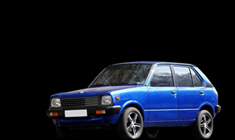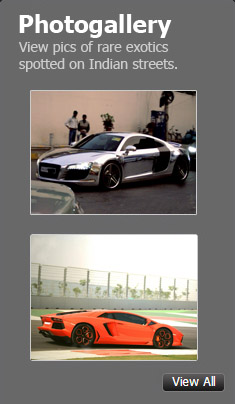News
Royal Enfield Himalayan 450 : Our observations after 3 days of riding
The second generation Himalayan is powered by a 452 cc single cylinder, 4 stroke, DOHC, liquid-cooled motor - christened the 'Sherpa'. This engine produces 39.5 BHP @ 8,000 rpm and 40 Nm torque @ 5,500 rpm
This new motor is also the first-ever liquid-cooled engine from Royal Enfield. Featuring a compression ratio of 11.5:1 and coupled to a 6-speed gearbox and slip & assist clutch - the powertrain is competitive on paper against modern competition from Triumph and KTM. Traditionally, Royal Enfields have been known for their long-stroke motors and even the LS411 had a lazy bore stroke measurement of 78 mm x 86 mm. Shockingly - the Sherpa motor is square, bordering on short stroke! Featuring an 84 mm bore and an 81.5 mm stroke - Royal Enfield claims that this motor produces more torque than the old Himalayan, all the way from ~2500 rpm to 8000 rpm.
That said, the laws of physics can't be so easily overcome and the new Himalayan falls seriously short of the low-end torque pull of the earlier generation. Releasing the clutch off idle, the bike crawls forward at 10 km/h, but it feels strained and prepared to stall at the hint of an obstacle. You may need a slight throttle and clutch play when moving from idle in 1st. Similarly in 2nd and 3rd gears as well, the bike will pull forward at 17 km/h and 20 km/h respectively without any accelerator inputs, although making its disapproval known quite audibly. This motorcycle is just not happy below 2,000 rpm and if you are used to the older Enfields, relearn your habits. Period.
Above 2,000 rpm, the violent disapproval turns to one of submission and from 2,000 to 3,000 rpm it feels like the bike has accepted the reality that it needs to get a move on. The first hint of real life comes at 3,000 rpm which is a sweet spot for sedate city use, but the real performance of this motor resides between 4,000 to 7,000 rpm where the torque curve feels linear and unwavering. Keep the bike in this rpm range and the progress is deceptively fast. Even capable of giving the men in orange a run for their money. Even though the peak power is delivered at the redline of 8,000 rpm, it feels the most exciting when kept at 7,000. The rpm needle starts flashing red post 8,000 and a smooth fuel cut-off happens at ~8,500 rpm.
Speaking of the Orange machine - that guy would most likely have a wider grin on his face despite the Himalayan being neck to neck in performance with him. The linear power delivery of the Himalayan masks the feel of the actual performance on offer. Coupled with the long wheelbase, many a time you are taken by surprise with the speeds shown on the console. Secondly, the Himalayan motor, although free-revving, lacks the mad top-end rush that the rival is known for! On the plus side, the Sherpa 452 with its ride-by-wire throttle calibration seems to have a dual character that can do a bit of both - relaxed highway touring (whereas the KTMs are always eager to run away) and spirited runs.
The bike now has new-found expressway cruising abilities, and both 80 km/h and 100 km/h come up in the meat of the torque band, i.e. at 4,000 rpm and 5,000 rpm respectively in 6th gear. Coupled with the excellent suspension and long wheelbase - this one is a brilliant mile muncher on the expressways, but an absolute blast on two-lane state highways and B-roads:

The gear lever needs some getting used to - downshifts are especially messy to get right till you get used to the bike. All riders did complain of missing downshifts, an issue which I faced as well initially. But once used to the bike, I could get away with even aggressive downshifts when tested with both my touring and sporty riding shoes as well. Upshifts work well and click into place with a very positive feel.
Riding Modes
Four riding modes are available:
- Performance + ABS ON
- Performance + Rear ABS OFF
- ECO + ABS ON
- ECO + Rear ABS OFF
The ride mode can be viewed and changed by pressing the "M" button on the RHS switchgear. ECO mode is interesting as it reduces the power output of the first 4 gears. Royal Enfield claims that the power delivery in ECO mode is reminiscent of the original Himalayan. I found the ECO mode to be useful in city usage and it also helps deliver better fuel efficiency.
While the 4-gears thought process is a bit interesting on paper, I found the logic to be slightly flawed in the highway scenario. For example, you accelerate your way progressively through the first 4 gears and slot into 5th and 6th, the motor feels like the restraints have been removed and it starts performing with the full vigour of a 40 BHP motorcycle in these two gears. However, suppose you have to brake and downshift into 4th or 3rd and then try to pull off with the same eagerness - you suddenly are dealing with a ~ 25 BHP motorcycle once again! That somehow felt more of a buzzkill to me than having all 6 gears in a low-power map for ECO mode.
Refinement & NVH
Once again, the laws of physics raise their ugly head. With a large single-cylinder motor, vibrations are present throughout the revv-range. Unlike the modern J-series 350cc motors from RE, this one even has visible vibration on the handlebars at idle. I could not even identify a particular rpm in which vibrations came on or went off. They were a constant companion. Most of the time, a buzz can be felt on the tank, seat and footpegs. Thankfully, no resonance was experienced at any rpm range and it doesn't get harsh enough to restrict revvs, which means the vibrations are not a deal-breaker for me, but certainly not dismissible either. This is a definite area of improvement for Royal Enfield!
Coming to the exhaust note, gone is the bassy, lazy, long-stroke exhaust note of the old Himalayan. IMHO, the new Himalayan is perhaps the most generic-sounding motorcycle from RE. While riding the motorcycle, you could confuse it for a Hero or KTM depending on the throttle inputs. The only saving grace is a generous dollop of pops and rumbles from the exhaust when closing the throttle off.
Suspension and Handling
Quite interesting to see technology trickling down into lower segments. The first time I heard the magic of Showa was back in 2016 when the Versys 650 was launched with Showa SFF. 7 years down the line, my current motorcycle, the Triumph Tiger Sport 660 also rides on non-adjustable 41 mm forks from Showa. Hence my curiosity levels peaked upon seeing the Himalayan getting launched with Showa 43 mm USD forks (non-adjustable) with 200 mm suspension travel up front, coupled to a mono-shock at the rear, also with 200 mm travel. Happy to report that the performance doesn't disappoint. The suspension is one of the biggest highlights of this motorcycle.
Starting from idle, you notice a slight inherent stiffness in the suspension, but not cumbersome in the city by any means. Where larger potholes are still dealt with plushness. The real magic starts as the speeds climb and the suspension starts to flatten most of the road irregularities. With the 21" wheel upfront, even the smaller speed breakers are dismissed without a second thought. As expected on a bike with longer suspension travel, there is a certain amount of nose dive experienced when grabbing the brakes, but nothing alarming here. The base tune of this suspension setup is excellent and most owners will not miss any adjustability whatsoever.
The rear suspension feels even more plush than the front - however, do note that the 6-step preload adjuster is kept at its softest setting from the factory. Although the ride quality was brilliant even with a pillion, I would have preferred to tighten the preload to avoid the sagging rear with pillion weight. Preload can be increased by rotating the adjuster clockwise using a C-spanner provided in the tool kit. A remote preload adjuster could have been a welcome addition, but then not a negative point considering the price and segment.
As mentioned earlier, the Himalayan is a heavy motorcycle, but the weight is very well masked once on the move. Through corners, the suspension feels reassuring and the bike maintains the line through corners despite slight mid-corner undulations.
Braking
Braking duties are handled by ByBRE, Brembo's budget brand, which has now become the mainstay of most bikes in the segment. The setup consists of a 320 mm ventilated disc up front with double-piston calipers and a 270 mm ventilated disc at the rear with a single-piston caliper. Dual-channel ABS comes standard, and in the interest of offroad abilities, the rear channel can be switched off when required.
Overall the setup is excellent and performs the job efficiently. Front brakes have a soft initial bite, perhaps to aid off-road riding. However, upon pulling the lever harder the bike decelerates rapidly and does not leave you wanting for more bite. There is a certain amount of nose dive experienced when grabbing the brakes but not alarming in this case.
The rear bite is powerful, perhaps too much for a ~200 kg machine. With ABS off, it is very well possible to lock the rear wheels on the road or off-road. Unlike in many rival motorcycles, the rear bite is powerful enough to bring the vehicle to a halt by itself, but it is far more effective to use the front brakes instead.
Closing Thoughts
The Himalayan was not a full-on love at first ride, and it took me some time to get used to the characteristics of the vehicle. Once you become familiar with a couple of factors like the rpm sweet spot and the gearshifts to keep you in that zone, the Himalayan is a fun motorcycle to ride and own. Deceptively fast on the expressways and extremely enjoyable on good 2-lane roads. The engine isn't even the main highlight here, it is the mechanical package that is well complemented with a good chassis, excellent suspension, good tyres and brakes setup. As a BHPian commented, things can only get better from here on, and if the engine can be made a little bit more refined and the engine tune tweaked, this package will be flawless! But even now, it is certainly an excellent contender for a one-motorcycle garage.
Continue reading the discussion on the Royal Enfield Himalayan 450 on our forum.


















